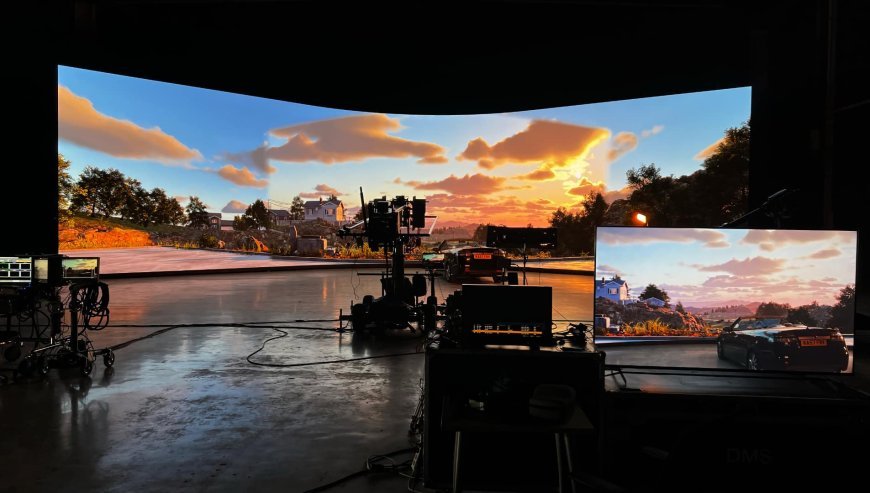Exploring the Depths: The Immersive World of VR Caves

The allure of caves—those mysterious, subterranean worlds carved by nature over millennia—has captivated explorers, scientists, and adventurers for centuries. From the intricate stalactite formations of Carlsbad Caverns to the vast chambers of Mammoth Cave, these natural wonders evoke a sense of awe and curiosity. But what if you could step into these hidden realms without leaving your home? Thanks to advancements in virtual reality (VR), the concept of a VR cave or virtual cave is transforming how we explore, learn about, and experience these geological marvels. In this guest post, we’ll dive into the world of

, exploring their applications, benefits, and the future of immersive exploration.
What is a VR Cave?
A VR cave, often referred to as a virtual cave, is a digital recreation of a cave environment experienced through virtual reality technology. Unlike traditional 2D simulations or static images, a VR cave immerses users in a fully interactive, three-dimensional space. By wearing a VR headset and using controllers or motion-tracking systems, users can "walk" through cave systems, observe geological formations, and even interact with elements like water flows or virtual wildlife.
The term "VR cave" can also refer to a specific type of VR setup known as a CAVE (Cave Automatic Virtual Environment). This is a room-sized immersive environment where high-resolution projectors display 3D visuals on multiple walls, creating a surround experience. While CAVE systems are often used in research and industrial applications, consumer-grade VR caves rely on headsets like the Oculus Quest, HTC Vive, or PlayStation VR to deliver accessible, immersive experiences.
Why Explore Caves in Virtual Reality?
Caves are inherently difficult to access. They’re often located in remote areas, require specialized equipment, and pose physical risks like tight passages or unstable surfaces. Virtual reality eliminates these barriers, making cave exploration accessible to everyone—regardless of physical ability, location, or expertise. Here are some key reasons why caves in virtual reality are gaining traction:
1. Accessibility for All
Virtual caves democratize exploration. People with mobility challenges, those unable to travel, or individuals wary of the risks associated with caving can experience the thrill of discovery from the safety of their homes. Educational institutions can use VR caves to teach students about geology, biology, and archaeology without the need for costly field trips.
2. Preservation of Natural Caves
Many caves are fragile ecosystems, easily damaged by human presence. Foot traffic can erode formations, disturb wildlife, or introduce pollutants. Virtual caves allow users to explore without impacting these delicate environments, supporting conservation efforts while satisfying curiosity.
3. Enhanced Learning and Research
For scientists, students, and educators, VR caves offer a powerful tool for studying cave systems. Detailed 3D models can replicate real-world caves with scientific accuracy, allowing users to analyze geological features, study bat habitats, or simulate water flow dynamics. Interactive elements, such as virtual core samples or sediment analysis tools, enhance the learning experience.
4. Immersive Entertainment
Beyond education, virtual caves provide thrilling entertainment. Imagine navigating a glowing crystal cavern, solving puzzles in an ancient underground temple, or escaping a collapsing cave in a VR game. These experiences blend adventure, storytelling, and interactivity, appealing to gamers and thrill-seekers alike.
The Technology Behind Virtual Caves
Creating a convincing virtual cave requires a combination of advanced technologies. Here’s a look at the key components:
1. 3D Modeling and Scanning
To recreate caves in VR, developers often use 3D scanning technologies like LiDAR (Light Detection and Ranging) to capture precise measurements of real cave systems. These scans produce highly detailed digital models, complete with textures, lighting, and spatial data. For example, the Virtual Reality Cave Project by the University of Nottingham used LiDAR to map the Creswell Crags, a limestone gorge in the UK, creating a virtual tour that preserves its archaeological significance.
2. VR Hardware
Consumer VR headsets, such as the Meta Quest 3 or Valve Index, provide the processing power and display quality needed for immersive cave experiences. These devices offer high-resolution visuals, spatial audio, and motion tracking, allowing users to feel as if they’re truly underground. For professional applications, CAVE systems use multiple projectors and motion sensors to create a room-scale experience, ideal for collaborative research or group demonstrations.
3. Game Engines and Software
Game engines like Unity and Unreal Engine are the backbone of virtual cave development. These platforms enable developers to create realistic lighting, physics-based interactions, and dynamic environments. For instance, water reflections, dripping stalactites, and ambient sounds (like echoing drips or distant bat calls) enhance the realism of the experience.
4. Haptic Feedback and Interaction
Some VR cave experiences incorporate haptic feedback devices, such as gloves or vests, to simulate the tactile sensation of touching rock surfaces or climbing. Controllers allow users to interact with objects, like picking up virtual fossils or illuminating dark passages with a flashlight.
Applications of VR Caves
The versatility of caves in virtual reality has led to their adoption across various fields. Here are some notable applications:
1. Education and Training
Virtual caves are revolutionizing how we teach geology, speleology, and environmental science. Students can explore virtual replicas of famous caves, such as France’s Lascaux Cave, known for its prehistoric art, or Kentucky’s Mammoth Cave, the world’s longest known cave system. Interactive features, like virtual guided tours or quizzes, make learning engaging and memorable.
For professional training, VR caves simulate hazardous environments for speleologists, archaeologists, or first responders. Trainees can practice navigation, equipment use, or emergency protocols in a safe, controlled setting.
2. Scientific Research
Scientists use virtual caves to study inaccessible or endangered cave systems. For example, researchers studying karst landscapes—regions with soluble rocks like limestone—can analyze virtual models to predict erosion patterns or groundwater flow. VR also enables collaborative research, where teams from different locations can explore the same virtual cave simultaneously.
3. Tourism and Cultural Preservation
Many caves hold cultural or historical significance, such as those containing ancient rock art or sacred sites. Virtual caves allow tourists to visit these locations without risking damage to the sites. For instance, the Chauvet Cave VR Experience lets users explore a UNESCO World Heritage site famous for its 36,000-year-old paintings, which is closed to the public to prevent deterioration.
4. Gaming and Entertainment
The gaming industry has embraced virtual caves as settings for immersive experiences. Titles like The Gallery – Episode 1: Call of the Starseed and Moss feature underground environments that combine exploration, puzzle-solving, and storytelling. These games leverage the immersive nature of VR to make players feel like true adventurers.
What's Your Reaction?

























































